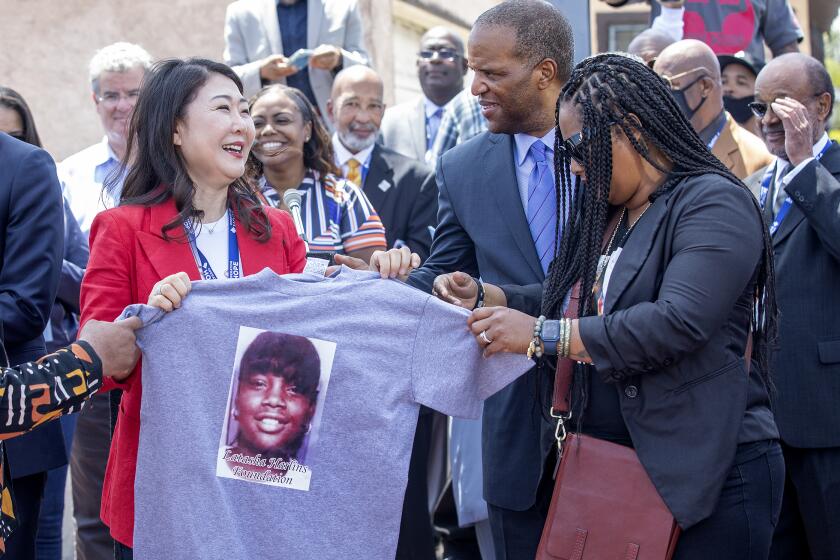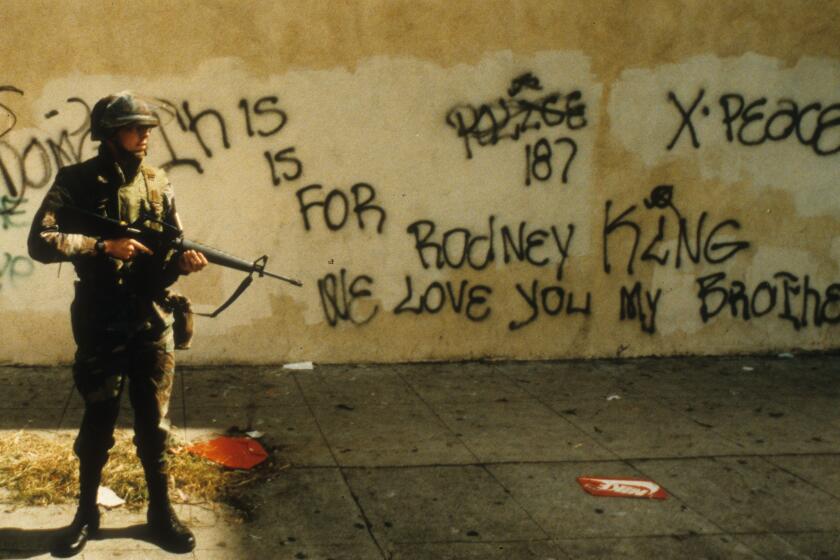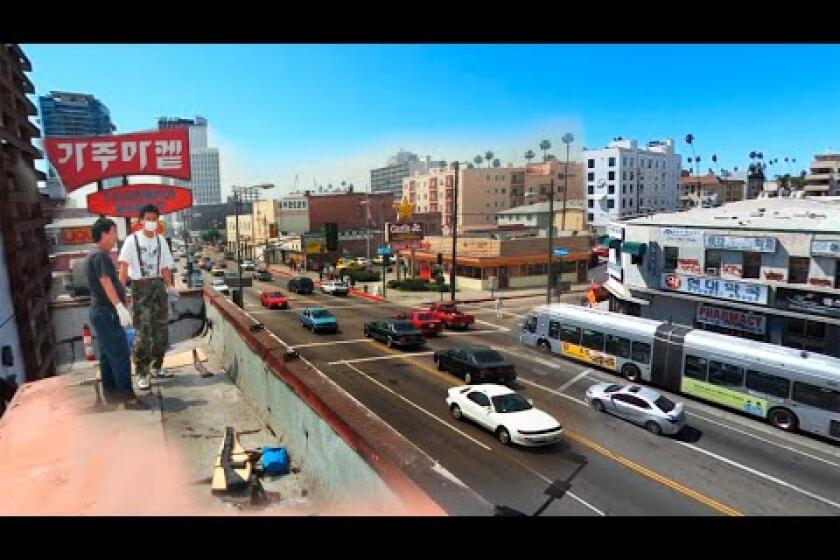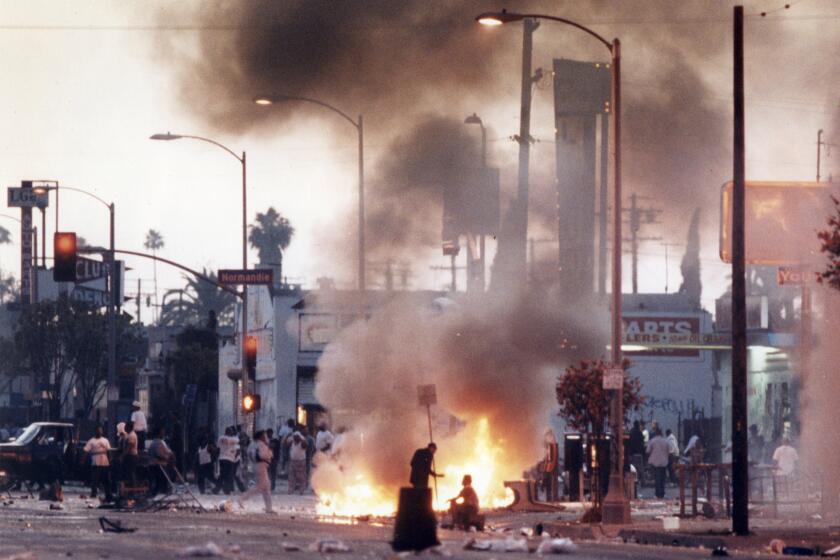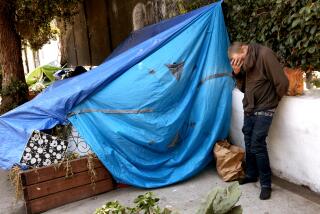Column: Don’t kid yourself. The riots that shocked us 30 years ago could easily happen again.
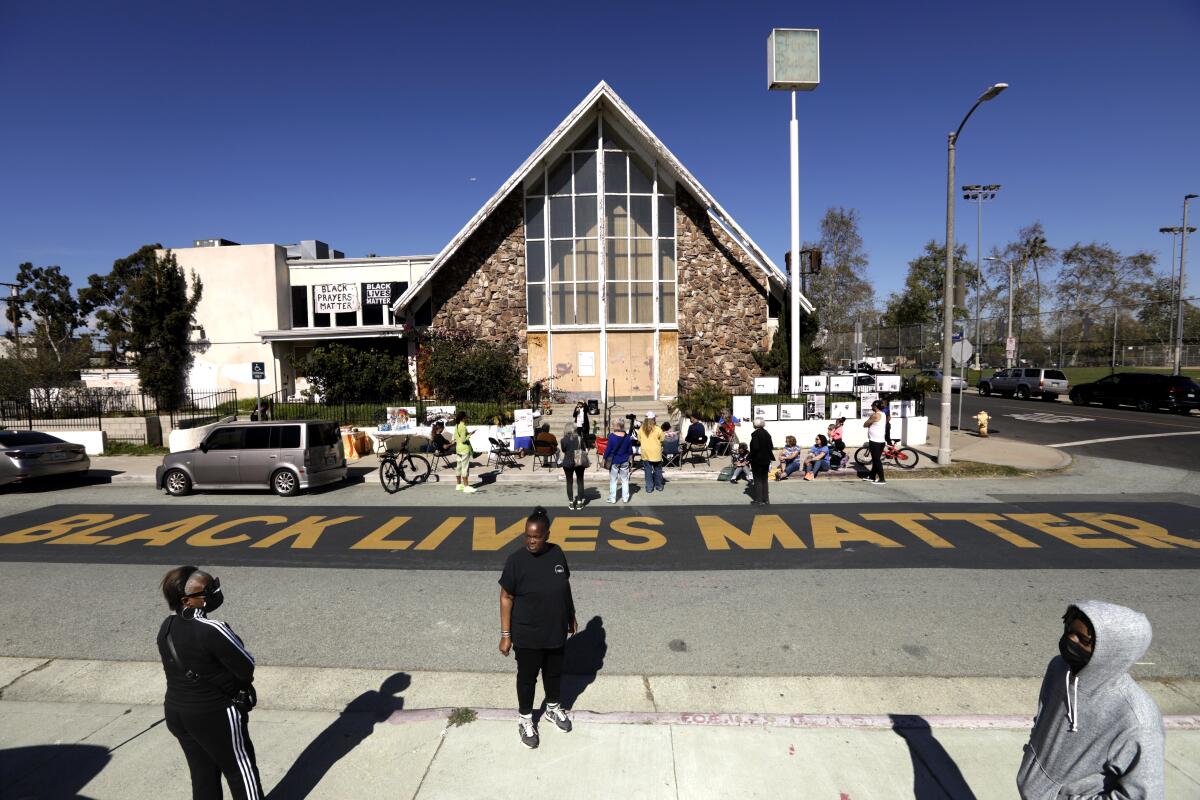
Thirty years ago, the Venice enclave of Oakwood was one of the few residential neighborhoods beset by widespread rioting after four Los Angeles police officers were acquitted in the beating of Rodney King.
No one died, and I find no record of injuries, but dozens of homes were attacked — some with bricks through windows, and one white family’s rented luxury home was invaded and torched by Black neighbors, while a babysitter and 5-year-old child cowered in the laundry room.
So much of coastal Los Angeles County is white. African Americans were driven from Santa Monica and Manhattan Beach, but Oakwood was different. For decades, because of racist economic policies, it was the only Westside neighborhood where African American families could buy homes. Many worked for the developer Abbot Kinney, who dreamed of turning Venice into a replica of its Italian namesake, with canals and seaside attractions.
Because of that, until the 1970s, African Americans were a majority of the population of Oakwood. Then came the real estate boom years and a radical shift in demographics.
As home prices rose — especially near the beach — Oakwood’s Black families found themselves in a squeeze. Many willingly cashed out and moved away with their equity to far-flung places like the Antelope Valley. Small, original-to-the-street bungalows were demolished to make way for fancy architect-designed homes, often camouflaged behind hedges and walls. The social critic Mike Davis once called these “stealth houses” that hide their “luxurious qualities with proletarian or gangster facades.”
By 1992, the Black population of Oakwood had shrunk to 22%; by 2020,10%. (The rest: More than half of Oakwood’s residents are white, about a third are Latino, about 4% are Asian and 4% mixed race.)
But even as the mansionization of Oakwood has proceeded apace, and the average home sale price rose to $3.9 million (in 2020), the neighborhood was and is dotted with federally subsidized apartment houses and smaller houses where generations of Black and Latino families have lived.
Across South L.A. and Koreatown, Angelenos commemorated the anniversary, recognizing the progress they’ve made and pledging more dialogue to bring people closer together.
If the idea of rich and poor living cheek-by-jowl seems like some kind of utopia, we found out in 1992 that it wasn’t. I wrote that the violence visited on Oakwood homes was an indictment of gentrification, the unsurprising result of clashing neighborhood dynamics, resentments and insensitivity.
That column was cited in a Wall Street Journal opinion essay a month or so later accusing The Times of “a new kind of yellow journalism.” What was our sin in the eyes of the conservative, business-friendly Journal essayist?
The Times, wrote the late Scott Shuger, “did what it could to fuzz up the issue of personal responsibility for those actions.” When it came to issues of race, he alleged, “the Times ranges between confused and gutless.”
Hardly.
We tried to explain the source of anger in communities of color in a complex and nuanced way.
The riots spotlighted for the world the rage of people stuck in a system that considered them insignificant. Should we memorialize them or move on?
We talked to enraged Black Angelenos, to Korean American shopkeepers who had been abandoned by the LAPD and forced to take up arms as their stores came under attack. We spoke to Latinos caught up in the rioting. We explored why then-Mayor Tom Bradley and Police Chief Daryl Gates were not on speaking terms, and how their rift hampered the city’s ability to calm the situation.
And now I think that given another just-right spark, it could happen again.
In Oakwood, some of the same dynamics are present, exacerbated by even higher property values, the still-fresh scars of the murders of so many unarmed Black people by police, and Black Lives Matter protests that made the violence an inescapable fact.
When media baron Jay Penske announced in the last few years that he and his wife, former Victoria’s Secret model Elaine Irwin, planned to turn the First Baptist Church of Venice into a massive family home, neighbors revolted. Under pressure, the City Council voted unanimously in September to designate the church a historic cultural monument.
Four photographers recall the moments leading up to and surrounding some of their most iconic photos of the L.A. uprising.
I was struck last week by one of the interviews in a CNN special, “The Fire Still Burns: 30 Years After the Riots.”
Host Van Jones examined the repugnant police policies that led to so much rage when the officers who beat King were acquitted (although two of them were later convicted in a federal trial of violating his civil rights). Operation Hammer, for example, an LAPD practice of fanning police out in South Los Angeles to make mass arrests of Black and brown young men, most of whom were never charged with serious crimes. Or the department’s vile habit of coding domestic violence calls involving Black people as NHI, or “no human involved.”
Jones sat down with Henry “Kiki” Watson, one of the men involved in the brutal attack of trucker Reginald Denny, who was pulled from the cab of his truck at the intersection of Florence and Normandie and beaten half to death as a news helicopter hovered overhead broadcasting live images of the mayhem.
Watson, a military veteran, father and homeowner, was convicted of misdemeanor assault and released after serving more than the six-month maximum sentence for that crime.
In November 1993, he and Denny shook hands on Phil Donahue’s television show.
Over the years, he has been interviewed, usually on riot anniversaries. I’ve come to think of him as a kind of bellwether.
Read our full coverage of the 30th anniversary of the L.A. riots.
His answers have remained remarkably consistent when asked about his actions that day. He got caught up in the emotion of the moment.
In 2012, on the 20th anniversary of the riots, Watson told a PBS reporter that he had nothing personal against Denny, who “just represented white America at the time.” When asked if it could happen again, he replied, “History has a tendency to repeat itself.”
Ten years after that, Jones asked him the same question: Why did he attack Denny?
No reason, Watson replied. “He was a victim of circumstance, just like any other. Emmett Till, you name it. There’s so many Black victims, I lost count. One ass whuppin’ as opposed to countless lost lives?”
And he would in all likelihood do the same thing again.
“I am a Black man in America, madder than a [expletive], so if you can’t understand that, then I don’t know what to tell you.”
More to Read
A cure for the common opinion
Get thought-provoking perspectives with our weekly newsletter.
You may occasionally receive promotional content from the Los Angeles Times.

